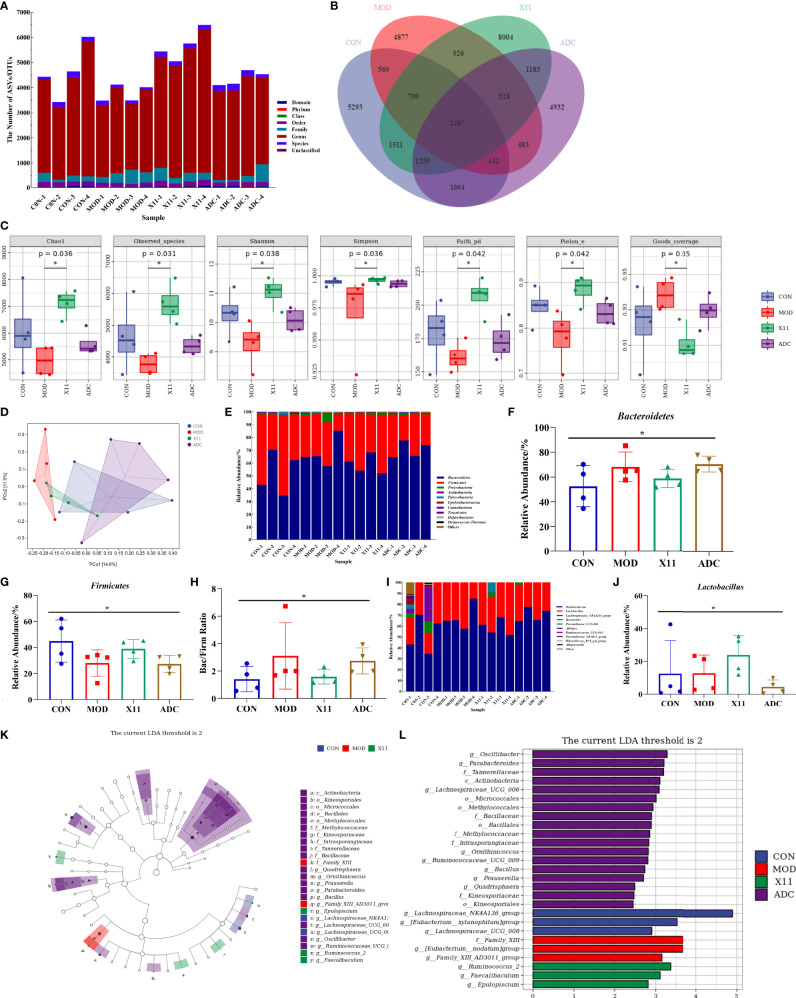Figure 7.
Effects of Lactobacillus paracasei X11 on gut microbe of mice. (A) Results of the taxonomic annotation. (B) Venn diagram of ASV/OTU in the feces. (C) α-Diversity indexes calculated with QIIME2 according to ASV/OTU numbers of each group (p < 0.05). (D) β-Diversity evaluated using the weighted UniFrac-based PCoA. (E) Bar graphs showing the relative abundance of different bacteria at the phylum level. (F) Relative abundances of Bacteroidetes at the phylum level (p < 0.05). (G) Relative abundances of Firmicutes at the phylum level (p < 0.05). (H) Changes in the Bac/Firm ratio in the different groups (p < 0.05). (I) Bar graphs showing the relative abundance of different bacteria at the genus level. (J) Relative abundances of Lactobacillus at the genus level (p < 0.05). (K) Cladogram based on LEfSe analysis showing community composition of the gut microbiota in mice. (L) Linear discriminant analysis (LDA) effect size (LEfSe) method was used to investigate bacterial community at the phylum level. LDA score higher than 2 indicates a higher relative abundance in the corresponding group than in other groups. ASV, amplicon sequence variant; OTU, operational taxonomic unit; PCoA, principal coordinates analysis. The meaning of the asterisk symbol indicates significant difference. (P < 0.05).

